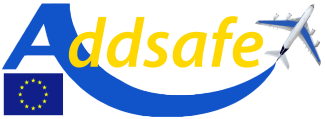

ADDSAFE
Department in charge
Subject of the project:
Recent airliner accident statistics show that about 16% of the accidents between 1993 and 2007 can be attributed to Loss of Control (LOC), caused by a piloting mistake, technical malfunctions or unusual upsets due to external disturbances. LOC is intrinsically related to the guidance and control (G&C) system of the aircraft, and includes sensors and actuators failures. The state-of-practice for aircraft manufacturers to diagnose these faults and obtain full flight envelope protection is to provide high levels of hardware redundancy in order to perform coherency tests and ensure sufficient available control action. This hardware-redundancy based fault detection and diagnosis (FDD) is becoming increasingly problematic when used in conjunction with the many innovative technical solutions being developed by the aeronautical sector to satisfy the greener and safety imperatives demanded by society. The objective of the project to develop FDD methods based on the analytical redundancy principle providing usable approaches to advanced aerospace industries.
Project objectives:
ADDSAFE tries to overcome the technological gap by facing the following two challenges: i) helping the scientific community to develop the best suited FDD methods capable of handling the real-world challenges raised by industry; and ii) ensuring acceptance and widespread use of these advanced theoretical methods by the aircraft industry. The overall aim of the project is to develop and apply model-based FDD methods for civil aircraft in order to increase aircraft safety and reduce development/maintenance costs. The use of these advanced FDD synthesis and tuning methods in conjunction with reliable software verification & validation (V&V) tools will also reduce the costs for development and certification. Three main benefits that will be achieved in pursuit of ADDSAFE’s aim are: i) Identification and definition of a set of guidelines for aircraft G&C FDD. 2) Improved methods and understanding of aircraft G&C FDD. 3) A step towards a V&V process for FDD systems.
Participants
The project body consists of industrial partners and research entities from 6 countries. There are 3 research institutions (SZTAKI, DLR, CNRS Bordeoux), 3 universities (Univ. Leicester, Univ. Hull, TU Delft) and 2 companies from the air industry (Airbus, Deimos Space) among the participants. The project coordinator is Deimos Space S. L.
Manager
